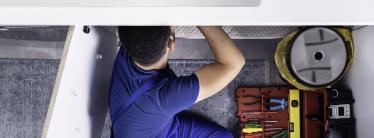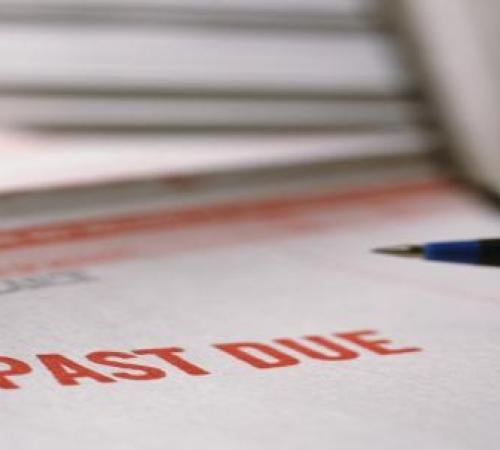
What are a landlord’s repair obligations?

There are various things to consider, from addressing emergency repairs promptly to conducting regular maintenance checks. We explore the legal requirements and best practices that can foster a positive landlord-tenant relationship and help landlords remain compliant and maintain quality housing for tenants.
Disclaimer:
Managing rental properties is a complex business. At Hiscox, we want to see your investments thrive. Our articles offer insights into property management and landlord best practices. But these articles aren't professional advice. To find out more about a subject we cover here, please seek professional advice.
Understanding a landlord’s repair obligations
Landlords are legally required to ensure their rental properties are safe, habitable, and meet basic living standards for tenants.
These rules are outlined in various legislations, including:
- Landlord and Tenant Act 1985, Section 11 (external link) – mandates landlords to keep the structure, exterior, and essential installations of the property in good repair
- Housing Act 2004 (external link) – introduces the Housing Health and Safety Rating System (HHSRS) to ensure properties are free from serious hazards
- Homes (Fitness for Human Habitation) Act 2018 (external link) – requires landlords to ensure their properties are fit for human habitation at the start and throughout the tenancy.
Landlords must make repairs in ‘reasonable’ time.
These rules may vary in Scotland (external link) and Northern Ireland (external link).
Structure and exterior repairs
Landlords are responsible for maintaining the structure and exterior of the property.
This includes:
- The roof
- Walls
- Doors
- Drains
- Gutters
- External pipes.
Landlords must ensure these elements are in good repair to prevent structural issues or hazards.1 (external link)
Water, electricity, and heating repairs
Landlords must ensure that the installations supplying water, gas, electricity, sanitation, space heating, and heating water are kept in working order.
This includes:
- Boilers
- Radiators
- Water tanks
- Electrical wiring.2 (external link)
Repairs to shared common areas
Landlords are usually responsible for repairing and maintaining common areas in multi-occupancy buildings, such as stairways, hallways, and entrances, to ensure these spaces are safe and accessible for all.3 (external link)
However, your responsibilities may vary depending on whether the property is leasehold or freehold. In leasehold properties, the lease agreement typically outlines who is responsible for common areas. The freeholder is often responsible for these repairs.4 (external link)
Upkeep of safety standards
Landlords must ensure that their properties comply with safety standards.
Adhering to these safety responsibilities (external link) helps maintain a hazard-free environment for tenants.
These include:
- Gas safety – ensuring gas equipment is installed and maintained by a Gas Safe registered engineer (external link), scheduling annual gas safety inspections.
- Electrical safety – ensuring the electrical system and all appliances are safe to use.
- Fire safety – meeting safety regulations, installing smoke alarms and carbon monoxide alarms, and ensuring accessible escape routes. If the property is a house in multiple occupation (HMO) (external link), fire alarms and extinguishers are required.5 (external link)
Internal repairs
Landlords are responsible for repairing internal fixtures and fittings, such as basins, sinks, baths, toilets, and their pipework.
Any damage caused during repairs must be rectified.
What are a tenant’s repair obligations?
Tenants also have obligations to help maintain the property.
These include:
- Reporting repairs – promptly inform the landlord about any issues that need fixing
- Proper care – keep the property clean and tidy
- Minor repairs or mould – report immediately as these could pose health hazards
- Damage – pay for damages caused by them, their family or friends
- Allowing entry – permit the landlord or their contractors to access the property for necessary repairs.6 (external link)
Landlords have the right to evict tenants who do not meet these responsibilities.7 (external link)
You can find the full list of tenant repair obligations at GOV.UK. (external link)
Emergency repairs
Emergency repairs are urgent issues that pose a risk to health, safety, or the property itself. These include:
- Gas leaks
- Burst pipes
- Electrical failures
- Structural damage.
There is no legal requirement that emergency repairs be completed within 24 hours. However, urgent repairs, such as those involving health and safety risks, should be addressed as quickly as possible.
A landlord’s rights for access and inspections
Landlords have the right to access their rental properties for things like maintenance, inspections, and security checks. However, they must visit at a ‘reasonable time of day’ – generally between 8:00 and 18:00 – and give at least 24 hours’ written notice beforehand, except in emergencies.8 (external link)
Tenants must consent for the landlord to enter, except where immediate access is needed to prevent damage or address safety issues.9 (external link)
All tenants have the right to quiet enjoyment of the property without unnecessary interference from the landlord.10 (external link)
Get the right insurance for your property repairs
Hiscox landlords insurance can help to safeguard you against the risks of renting out property.
Discover what landlord insurance is and how much you might need through our landlords insurance FAQ hub.
Explore the various covers we offer in our landlords insurance blog hub.
References
- https://www.gov.uk/private-renting/repairs
- https://www.gov.uk/private-renting/repairs
- https://www.gov.uk/private-renting/repairs
- https://assets.publishing.service.gov.uk/media/62b2f1b1e90e0765cecebb70/How_to_Lease_July_2022.pdf
- https://www.gov.uk/private-renting/your-landlords-safety-responsibilities
- https://www.gov.uk/private-renting
- https://www.gov.uk/private-renting/repairs
- https://www.gov.uk/private-renting/repairs
- https://www.gov.uk/private-renting/repairs
- https://www.gov.uk/government/publications/how-to-let/how-to-let






